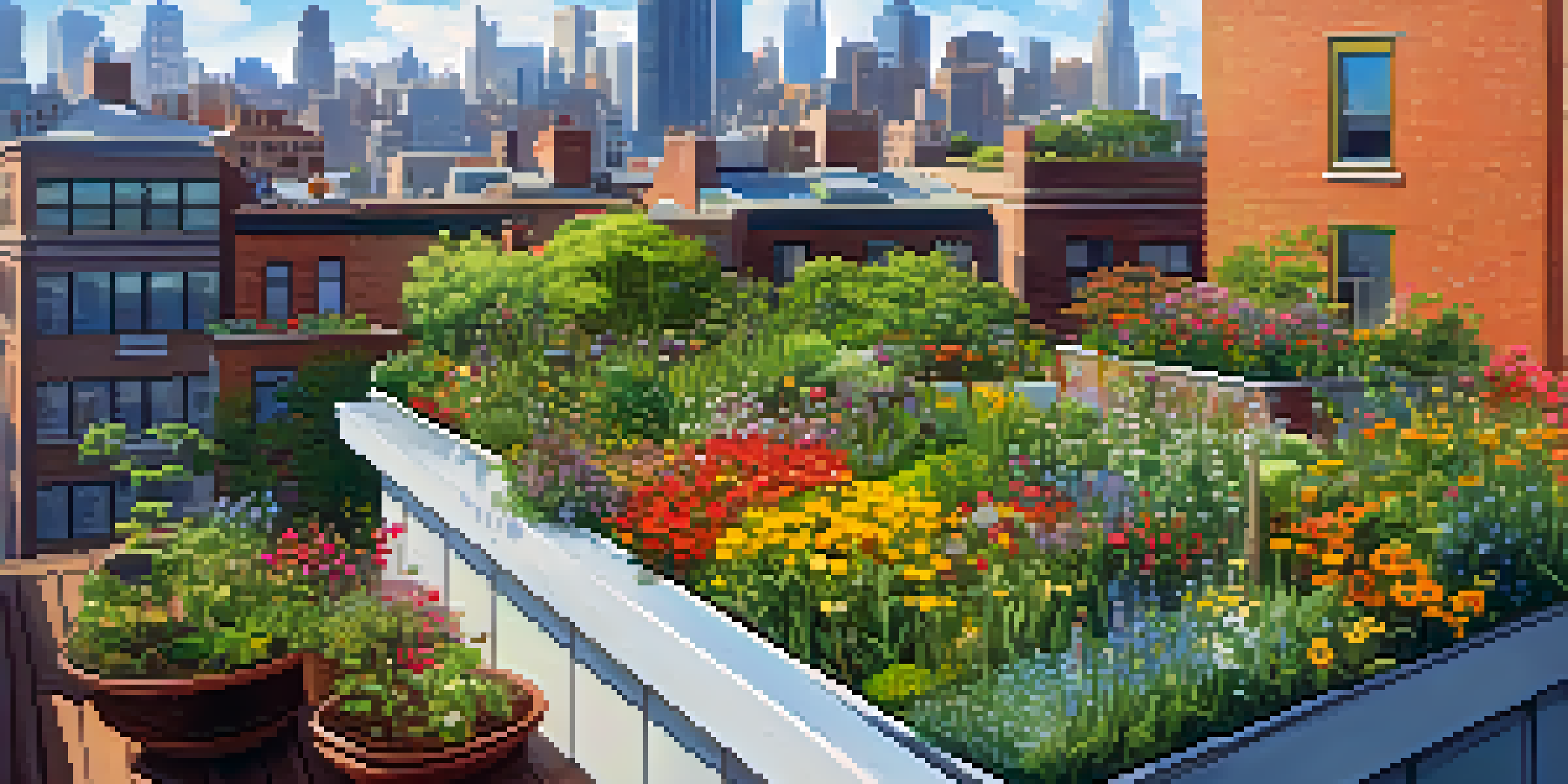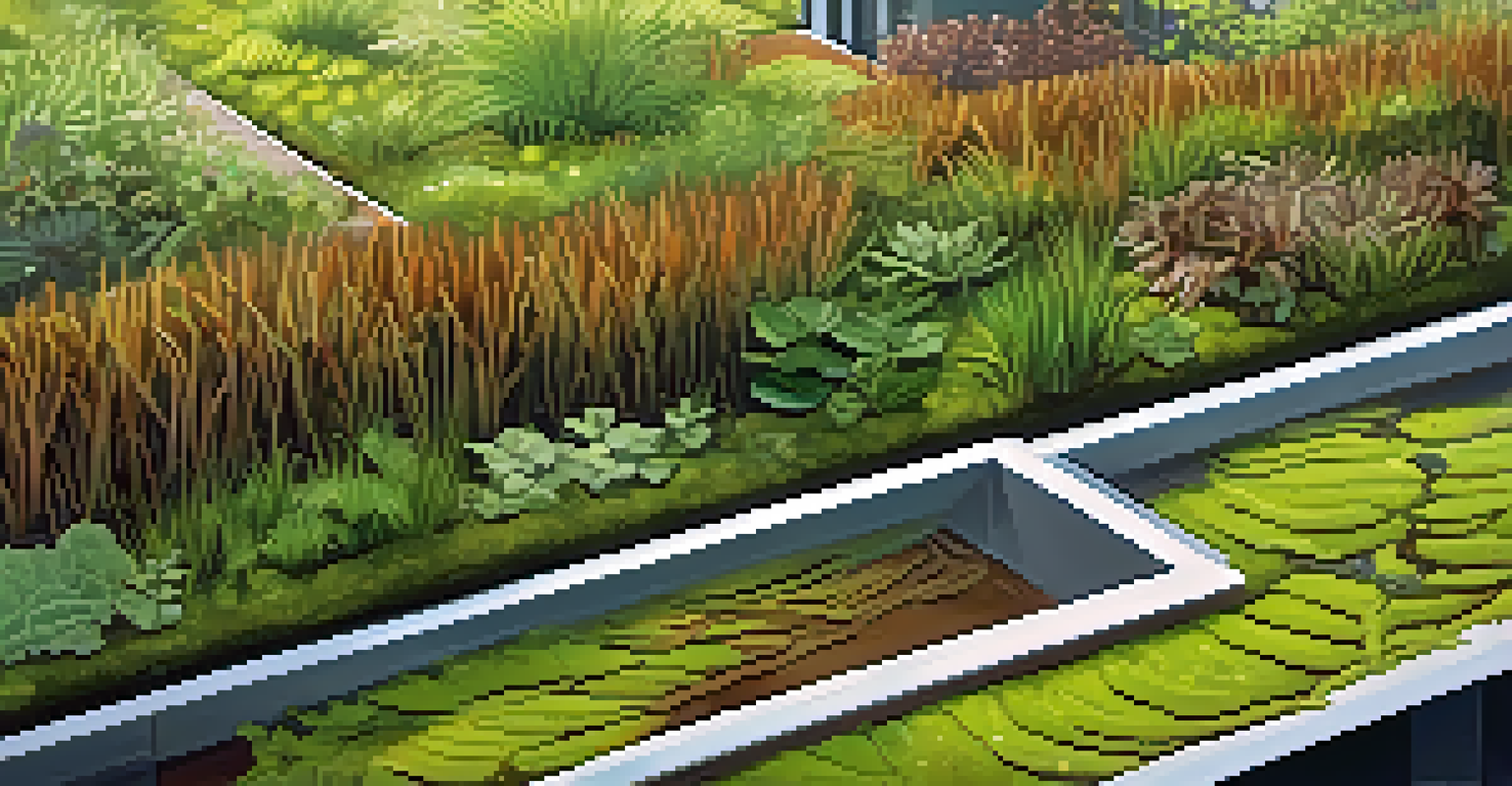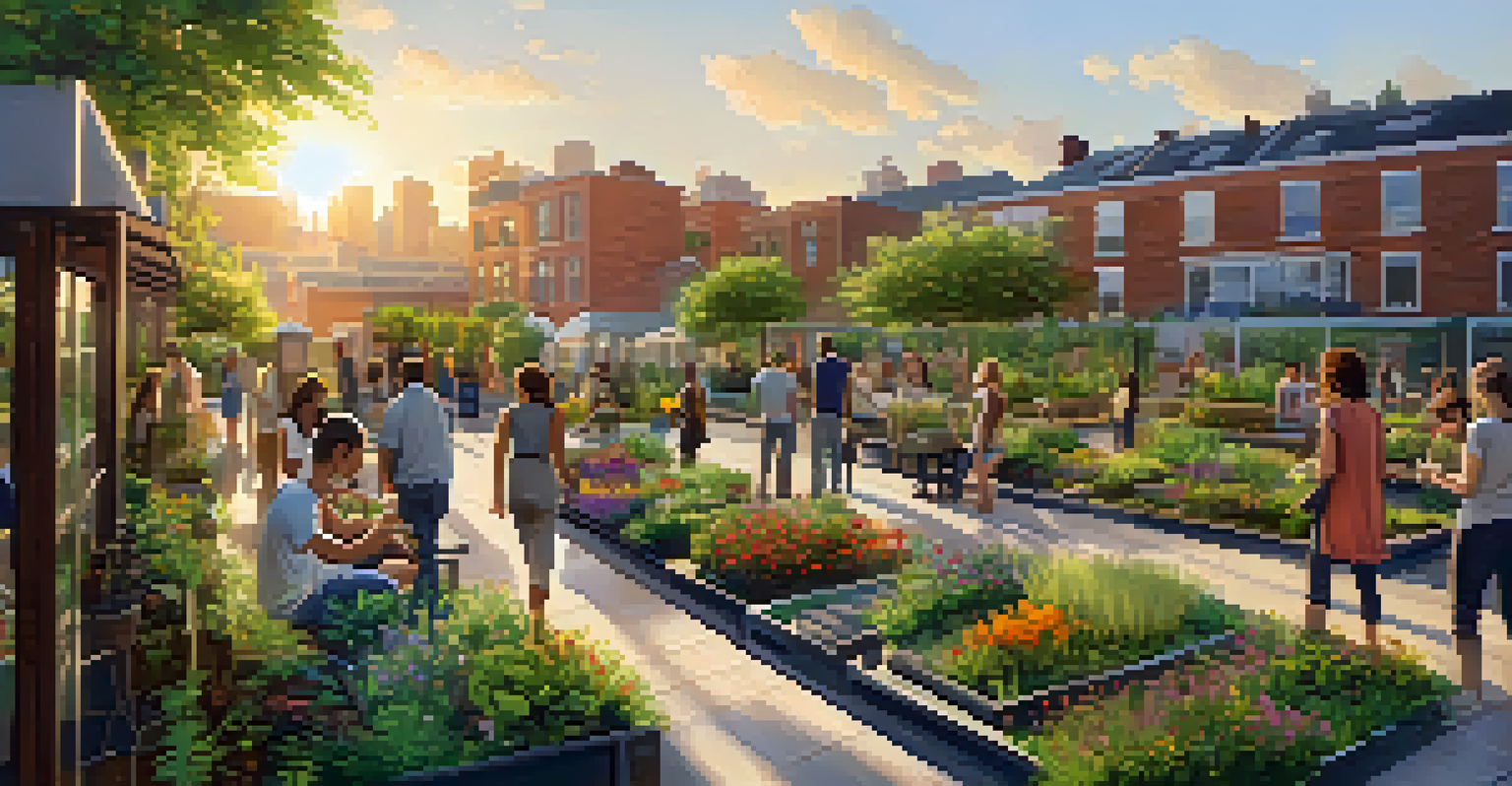The Benefits of Green Roofs in Urban Climate Adaptation

Understanding Green Roofs: A Brief Overview
Green roofs, often referred to as living roofs, incorporate vegetation on rooftops, creating a mini-ecosystem in urban spaces. They can be either extensive, featuring low-growing plants, or intensive, supporting a variety of larger plants and even trees. This innovative design not only beautifies buildings but also brings numerous environmental benefits that help cities adapt to climate change.
Green roofs are not just a trend; they are a vital part of our urban ecosystems, offering solutions to many of the challenges cities face today.
By integrating greenery into the urban landscape, green roofs can significantly reduce the heat island effect, which occurs when cities become warmer than surrounding areas due to human activities. This temperature difference can impact energy consumption and public health, making green roofs a crucial element in promoting cooler, healthier urban environments.
Moreover, green roofs can manage stormwater effectively by absorbing rainfall, thereby reducing the risk of urban flooding. This capability is especially important as climate change leads to more extreme weather patterns, making sustainable infrastructure solutions more necessary than ever.
Enhancing Biodiversity in Urban Areas
One of the most compelling benefits of green roofs is their ability to support urban biodiversity. These rooftops can serve as habitats for various species, including birds, insects, and even small mammals. By providing these green spaces, cities can create corridors for wildlife, helping to maintain ecological balance in increasingly urbanized areas.

In addition to promoting wildlife habitats, green roofs can encourage pollinator activity, which is vital for food production and ecosystem health. Plants on green roofs can attract bees and butterflies, contributing to the pollination of both rooftop gardens and surrounding landscapes.
Environmental Benefits of Green Roofs
Green roofs help reduce urban heat, manage stormwater, and improve air quality, contributing to healthier city environments.
As urban areas continue to expand, the integration of green roofs can counteract the loss of natural habitats, providing refuge for wildlife. This approach not only enhances biodiversity but also fosters a connection between city dwellers and nature, promoting environmental awareness and stewardship.
Mitigating Air Pollution and Improving Air Quality
Urban environments often experience higher levels of air pollution due to traffic, industrial activity, and other human factors. Green roofs play a significant role in improving air quality by absorbing carbon dioxide and filtering out harmful pollutants. The plants on these roofs act like natural air purifiers, making urban spaces healthier for residents.
The future will be green, or not at all.
Additionally, the vegetation on green roofs can help reduce airborne particulates, which are tiny particles that can cause respiratory issues. By trapping these pollutants, green roofs contribute to cleaner air and a better quality of life for those living in densely populated areas.
Moreover, the increased oxygen production from the plants on green roofs can help counterbalance the carbon emissions found in urban settings. This dual benefit of pollution reduction and oxygen generation underscores the importance of green roofs in promoting sustainable urban living.
Energy Efficiency and Building Performance
Green roofs can significantly enhance the energy efficiency of buildings by providing additional insulation. During the summer months, the vegetation helps keep buildings cooler, reducing the need for air conditioning. Conversely, in winter, the added insulation can keep heat from escaping, leading to lower heating costs.
This energy efficiency translates into cost savings for building owners and occupants, making green roofs an attractive investment. Additionally, these roofs can increase the lifespan of roofing materials by protecting them from extreme temperature fluctuations and UV damage, ultimately resulting in less maintenance and fewer replacements.
Boosting Urban Biodiversity
These living roofs provide habitats for wildlife, enhancing urban biodiversity and fostering a connection between residents and nature.
As cities look for ways to reduce their carbon footprint, the energy savings provided by green roofs contribute to overall sustainability goals. By lowering energy consumption, these roofs help mitigate climate change impacts while promoting a more resilient urban infrastructure.
Economic Benefits and Property Value Increase
Incorporating green roofs into urban planning can lead to various economic benefits, both for property owners and the broader community. Properties with green roofs often see an increase in value due to their aesthetic appeal and energy efficiency. Potential buyers are increasingly drawn to sustainable features, making green roofs an attractive investment.
Moreover, green roofs can reduce stormwater management costs for municipalities by decreasing the burden on drainage systems. By absorbing rainwater, these roofs lessen the need for expensive infrastructure projects, allowing cities to allocate resources to other critical areas.
The creation of green jobs related to the design, installation, and maintenance of green roofs also contributes to local economies. As demand for sustainable infrastructure grows, so does the opportunity for skilled workers in this emerging field, fostering economic resilience in urban areas.
Promoting Mental Health and Well-Being
Green roofs offer more than just environmental and economic benefits; they also promote mental health and well-being for urban residents. Access to green spaces has been linked to reduced stress levels and improved mood, making green roofs an essential aspect of urban living. These serene environments can provide a respite from the hustle and bustle of city life.
Furthermore, the presence of greenery can enhance social interactions among residents. Rooftop gardens can serve as community spaces where neighbors gather, fostering a sense of belonging and community spirit. This social aspect is crucial in urban areas, where isolation can be a common issue.
Economic and Mental Health Gains
Green roofs can increase property values, reduce stormwater costs, and promote mental well-being through accessible green spaces.
Engaging with nature, even in small doses, has been shown to improve cognitive function and overall emotional health. By incorporating green roofs into cities, we not only enhance the physical landscape but also nurture the mental well-being of urban populations.
Challenges and Considerations for Implementation
While the benefits of green roofs are numerous, there are challenges to consider when implementing them in urban settings. Initial costs can be high, and property owners may hesitate to invest without clear financial incentives or government support. It's crucial for cities to provide guidelines and funding options to encourage the adoption of green roofs.
Maintenance is another important factor; green roofs require regular care to thrive. This includes watering, weeding, and ensuring proper drainage. Educating building owners and maintenance staff about the specific needs of green roofs can help ensure their long-term success and sustainability.

Finally, structural considerations must be addressed, as not all buildings are equipped to support the added weight of a green roof. Collaboration between architects, engineers, and city planners is essential to design roofs that can accommodate vegetation while ensuring safety and stability.